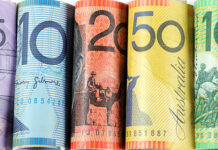Markets
It’s rather unusual that US, German and UK yield curve all move in a different direction, yet this week it was the case. UK Gilts obviously outperformed US Treasuries and German Bunds. The UK yield curve bull flattened on a weekly basis with yields 13 bps (2-yr) to 75 bps (30-yr) lower. The end of the disastrous fiscal experiment by now ex-PM Truss and ex-Chancellor Kwarteng are the obvious triggers with markets less worried about the financial future across the Channel. The Bank of England pushed through its plans to actively start selling UK Gilts over the next 12 months, but will exclude very long maturities adding to the relief rally at the very long end. German Bunds and US Treasuries extended their slides this week, but curves moved differentially. The German Bund yield curve bear flattened with yields rising 20 bps at the shorter tenors and slightly less than 10 bps at the very long end. ECB members speaking ahead of the purdah stuck with their 75 bps rate hike intentions with rumours suggesting the debate on the future winddown of the APP portfolio intensifying. Official communication will follow at one of the two remaining policy meetings this year with the process to start early next. The US yield curve turned less inverse with yields rising 6.7 bps (2-yr) at the front end but up to 35 bps (30-yr) at the very long end. The US 10-yr yield in the process pierced through 4.3% for the first time since 2007. A breakdown shows an even split between higher real rates and higher inflation expectations. The latter is worth watching and telling given that recent FOMC speak all suggested that the September FOMC dot plot is already outdated. Fed members suggested that the policy rate peak will rather be 5% than 4.5%.
Zooming in on today, the sell-off in mainly US Treasuries spills into other markets. Stock markets end their umpteenth bear market rally looking at losses of up to 2% in Europe. US stock markets opened 0.25-0.5% softer. The dollar speeds ahead in FX space. The trade-weighted dollar tested the October high at 113.92. The Japanese yen extends its tail spin to a new multidecade low at USD/JPY 151.70. No FX intervention can stop this rot. EUR/USD drifted towards the 0.97 area, before rebounding somewhat going into the start of US trading. The dollar spiked lower as a WSJ article suggested that some Fed policy makers want to start preparing markets for a slower tightening pace after November (so 50 bps in December) without really questioning the need to potentially go further (not scaling down end goal). The article also caused bourses to cap (Europe) or reverse (US) losses.
News Headlines
Belgian consumer confidence as published by the National Bank of Belgium in October stabilized at the very low level of -27, after a very sharp dropped registered in September. Households remain extremely concerned, although somewhat less pessimistic about the general economic outlook for Belgium over the next twelve months (-42 from -49). At the personal level, consumer expectations of their financial situation marginally improved (-17 from -18) but remain at a low level. Households have again significantly lowered their savings intentions (-11 from -5), continuing last month’s sharp decline. Consumers also remained very worried on potential higher unemployment (36 unchanged).
Polish data indicated that activity in the economy slowed further in September. Construction output was only 0.3% higher compared to the same month last year versus 6.1% Y/Y in august. Retail sales also cooled. In real terms, sales declined -2.8% M/M slowing Y/Y sales growth to 4.1%. Due to higher prices, sales at current prices declined only 1.1% M/M with the Y/Y measure still slightly rising to 21.9% Y/Y. The Polish Finance Minister today also reported that YTD budget revenues rose 6.4% Y/Y to PLN 383,13bn. However expenditures of the same period jumped 13.9% Y/Y. This results in a YTD surplus of PLN 27.46bn, which is substantial lower compared to last year’s surplus of 47.59bn for the same period. The yield on the Polish 10-y government bond today touched 9%, reaching the highest level in more than two decades.














